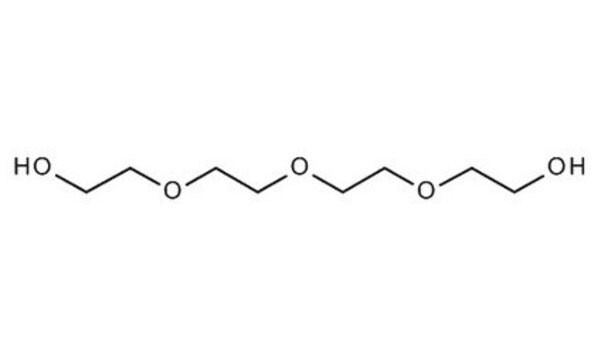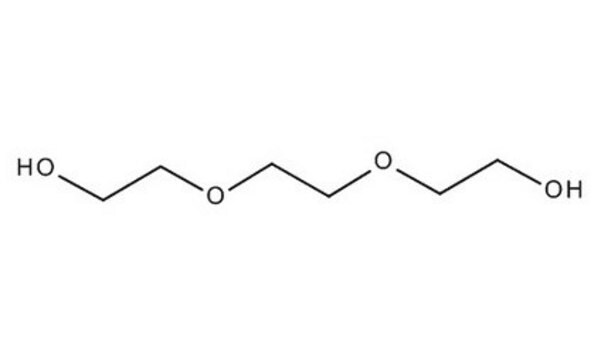Wichtige Dokumente
H26456
Diethylenglycol
ReagentPlus®, 99%
Synonym(e):
2,2′-Oxydiethanol, 2-Hydroxyethylether, Bis-(2-hydroxyethyl)-ether, Diglycol
About This Item
Empfohlene Produkte
Dampfdichte
2.14 (vs air)
Qualitätsniveau
Dampfdruck
0.01 mmHg ( 20 °C)
Beschreibung
non-ionic
Produktlinie
ReagentPlus®
Assay
99%
Form
liquid
viscous liquid
Selbstzündungstemp.
442 °F
Expl.-Gr.
2-12.3 %
Brechungsindex
n20/D 1.447 (lit.)
pH-Wert
5.0-8 (20 °C, 500 g/L)
bp
245 °C (lit.)
mp (Schmelzpunkt)
−10 °C (lit.)
Dichte
1.118 g/mL at 25 °C (lit.)
Funktionelle Gruppe
ether
hydroxyl
SMILES String
OCCOCCO
InChI
1S/C4H10O3/c5-1-3-7-4-2-6/h5-6H,1-4H2
InChIKey
MTHSVFCYNBDYFN-UHFFFAOYSA-N
Suchen Sie nach ähnlichen Produkten? Aufrufen Leitfaden zum Produktvergleich
Allgemeine Beschreibung
Anwendung
Rechtliche Hinweise
Signalwort
Warning
H-Sätze
Gefahreneinstufungen
Acute Tox. 4 Oral
Lagerklassenschlüssel
10 - Combustible liquids
WGK
WGK 1
Flammpunkt (°F)
280.4 °F - closed cup
Flammpunkt (°C)
138 °C - closed cup
Persönliche Schutzausrüstung
Eyeshields, Faceshields, Gloves, type ABEK (EN14387) respirator filter
Hier finden Sie alle aktuellen Versionen:
Besitzen Sie dieses Produkt bereits?
In der Dokumentenbibliothek finden Sie die Dokumentation zu den Produkten, die Sie kürzlich erworben haben.
Kunden haben sich ebenfalls angesehen
Artikel
Noble-Metal Nanostructures with Controlled Morphologies
Unser Team von Wissenschaftlern verfügt über Erfahrung in allen Forschungsbereichen einschließlich Life Science, Materialwissenschaften, chemischer Synthese, Chromatographie, Analytik und vielen mehr..
Setzen Sie sich mit dem technischen Dienst in Verbindung.








